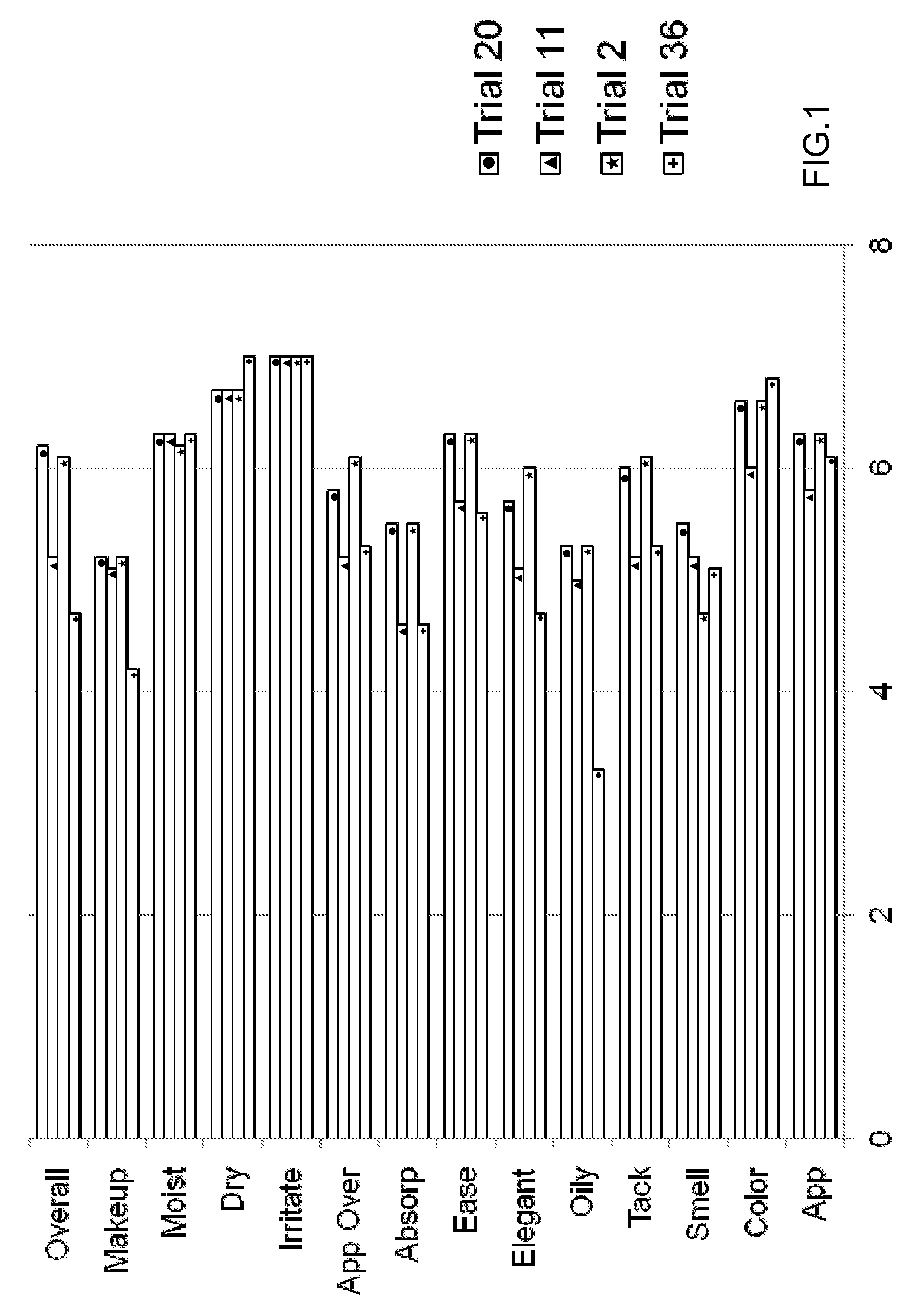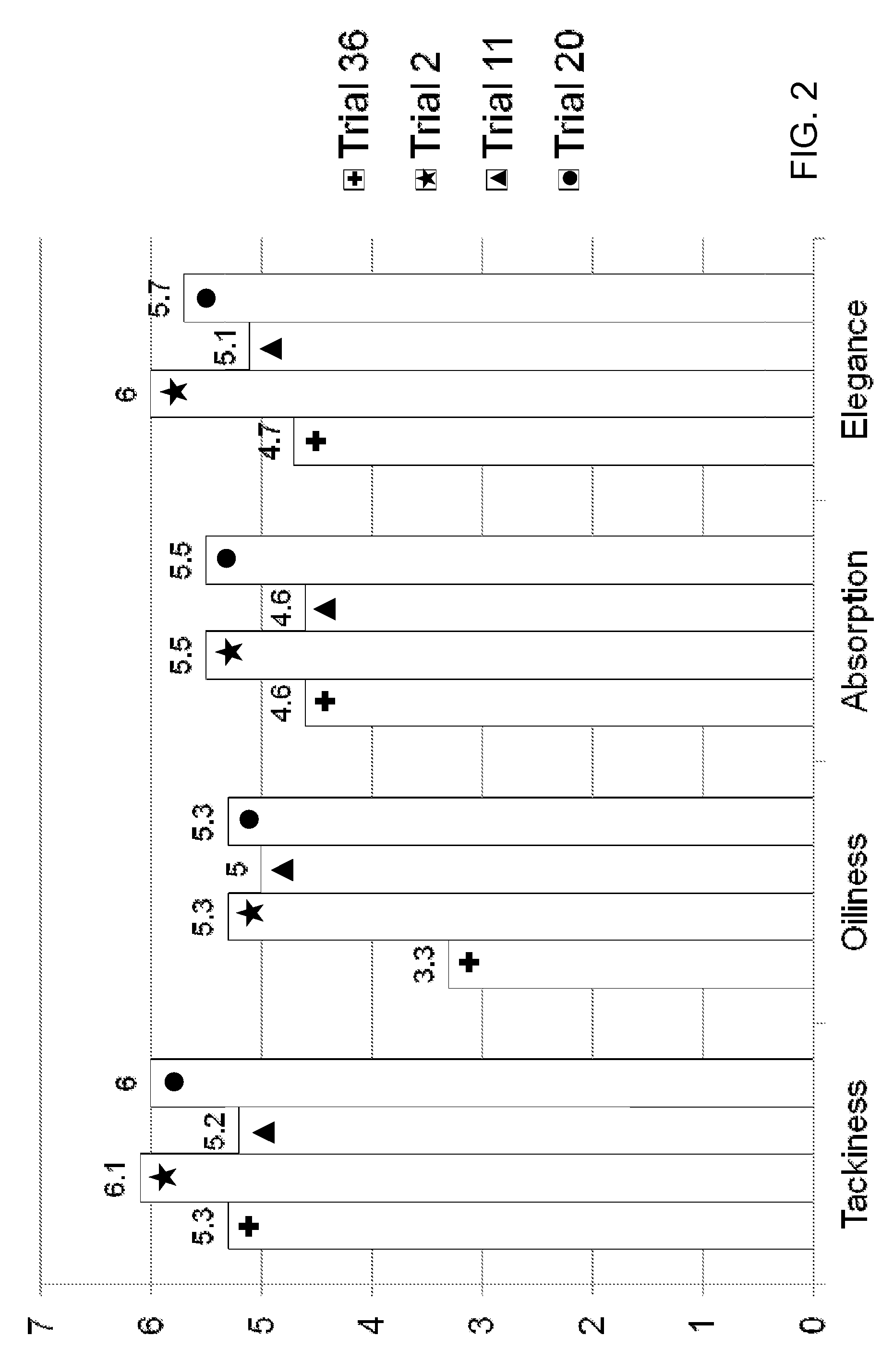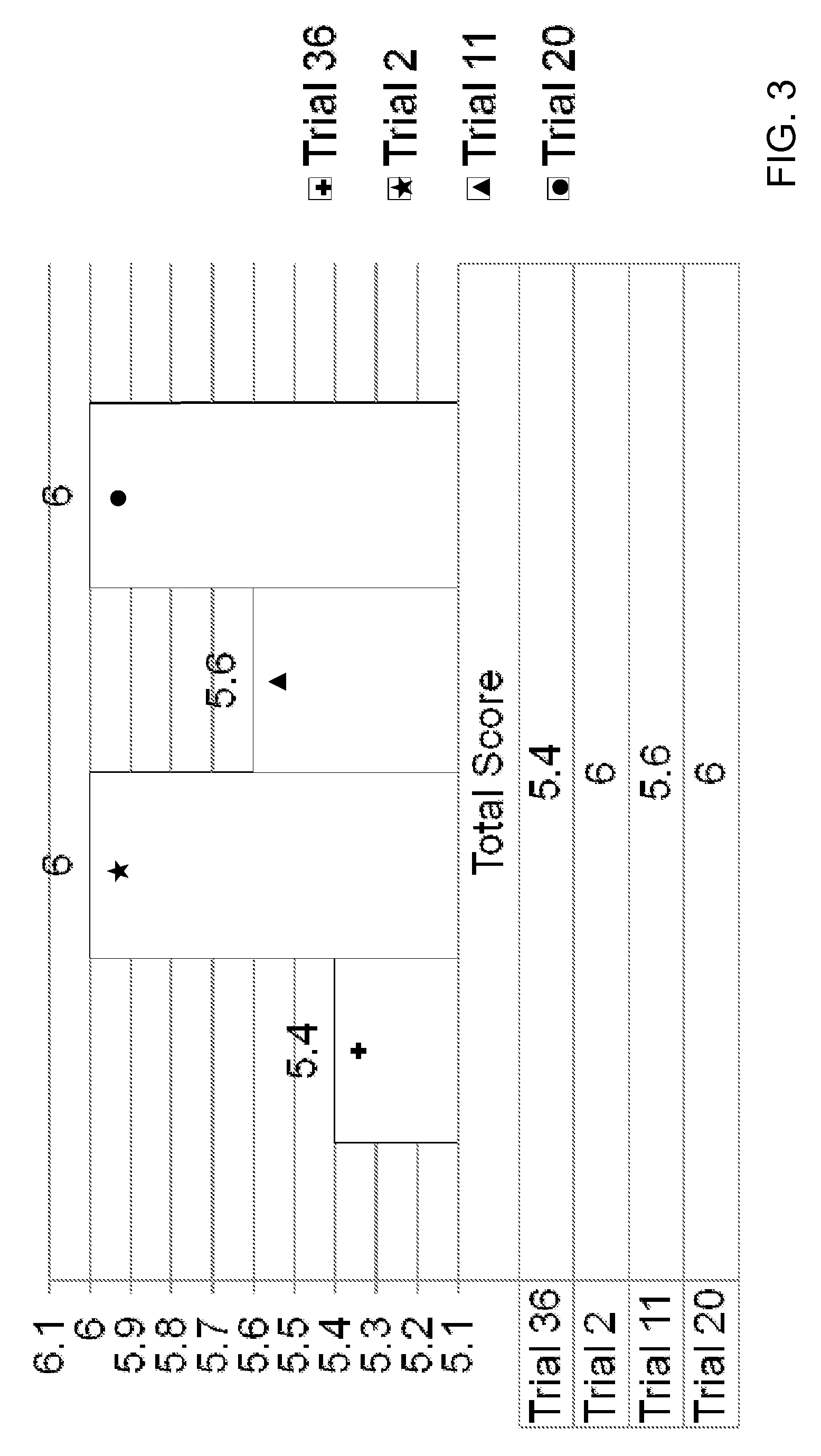Pharmaceutical cream compositions and methods of use
a technology of compositions and creams, applied in the field of compositions and methods, can solve the problems of rosacea being difficult to effectively treat, more redness and discomfort than patients can tolerate, and rosacea can be very difficult to achieve, and achieve the effects of hydrating effect, skin dullness, and skin thinning
- Summary
- Abstract
- Description
- Claims
- Application Information
AI Technical Summary
Benefits of technology
Problems solved by technology
Method used
Image
Examples
example 1
[0122]The amount per batch (kg) for each component of the oxymetazoline cream prepared as described below are provided with their concentration by weight of the total cream in Table 1. Table 2 illustrates a function and amount per batch (kg) for each component of the cream prepared as described below with each component's concentration by weight of the total cream wherein Tefose™ 63 is replaced by a mixture of PEG-6 Stearate, Glycol Stearate and PEG-32 Stearate.
[0123]Solution 1: In a 2 L glass beaker, 44.0 g of methylparaben, NF and 11.0 g of propylparaben, NF was dissolved into 880 g of polyethylene glycol by mixing with a magnetic stirrer until the mixture became homogeneous. Once the parabens were dissolved, 176.0 g of phenoxyethanol Ph Eur was added to the mixture.
[0124]Solution 2: In a separate 36 L capacity stainless steel beaker, heat purified 11305 g of purified water was heated to 75° C. to 78° C. using a hot plate, and 2.2 g of disodium edetate (EDTA), USP, 44.0 g of anhyd...
example 2
[0129]Oxymetazoline creams having a variety of formulations were prepared as described in Example 1 in order to obtain a cream which was cosmetically acceptable and had enough consistency to support prolonged exposure at 40° C. without losing its physical integrity. Trial 1 was a base formulation without any API. Trial 2 included 0.1% API to determine the impact that the API would have on the base formulation. The consistency (Viscosity value) revealed that there was no immediate physical impact of the active at 0.1% concentration on the physical integrity of the cream base as compared to the plain base in Trial 1. Trials 3, 5 and 6 were formulations prepared during development work. Trials 7-11 were formulations prepared for the first stability study. Trials 12-13 were formulations containing higher concentrations of oxymetazoline (2% and 1%, respectively). Trials 15-18 were formulations made for toxicology studies. Batches A and B were the same and were combined to make a larger b...
example 3
[0145]Oxymetazoline creams formulated as Trials 35-37 were filled into 30 gram tubes and stored at 25° C., 30° C., 40° C., and 60° C. Each cream was initially tested for appearance (Ap), melting point (mDSC), zeta potential (ZP), pH, and viscosity (V), and each sample was reevaluated once per week for 4 weeks to evaluate stability as follows:[0146]Initial: Ap; mDSC; ZP; pH; and V[0147]Week-1 (25; 40; 60): Ap; mDSC; ZP; pH; and V (if Ap passes)[0148]Week-2 (25; 40): Ap; mDSC; ZP; pH; and V (if Ap passes)[0149]Week-4 (25; 40): Ap; mDSC; pH; and V (if Ap passes)
[0150]A sensorial evaluation was conducted by a blinded panel. The panel's evaluation of cosmetic acceptability was based on the criteria provided in Table 15:
[0151]
TABLE 15CRITERIA FOR COSMETIC ACCEPTABILITY EVALUATIONTest CategoryScaleGeneral Appearance7 = Pleasant 1 = UnpleasantColor7 = Pleasant 1 = UnpleasantSmell7 = Pleasant 1 = UnpleasantTackiness7 = Not Sticky 1 = Very StickyOiliness7 = Not Oily 1 = Very OilyCosmetic...
PUM
| Property | Measurement | Unit |
|---|---|---|
| temperature | aaaaa | aaaaa |
| diameter | aaaaa | aaaaa |
| diameter | aaaaa | aaaaa |
Abstract
Description
Claims
Application Information
 Login to View More
Login to View More - R&D
- Intellectual Property
- Life Sciences
- Materials
- Tech Scout
- Unparalleled Data Quality
- Higher Quality Content
- 60% Fewer Hallucinations
Browse by: Latest US Patents, China's latest patents, Technical Efficacy Thesaurus, Application Domain, Technology Topic, Popular Technical Reports.
© 2025 PatSnap. All rights reserved.Legal|Privacy policy|Modern Slavery Act Transparency Statement|Sitemap|About US| Contact US: help@patsnap.com



